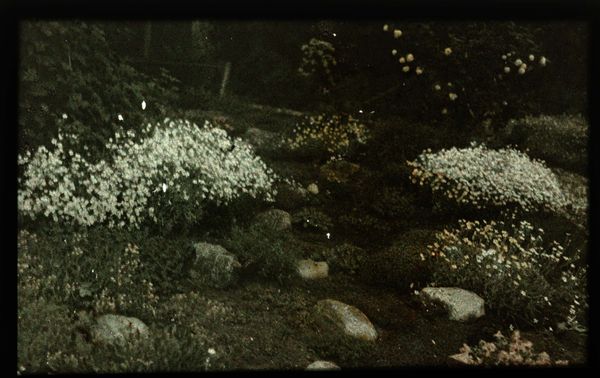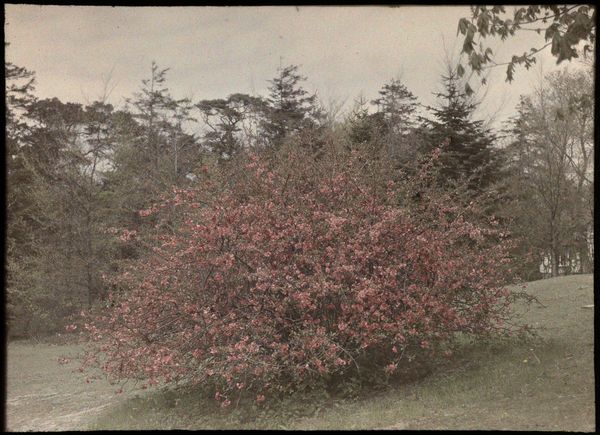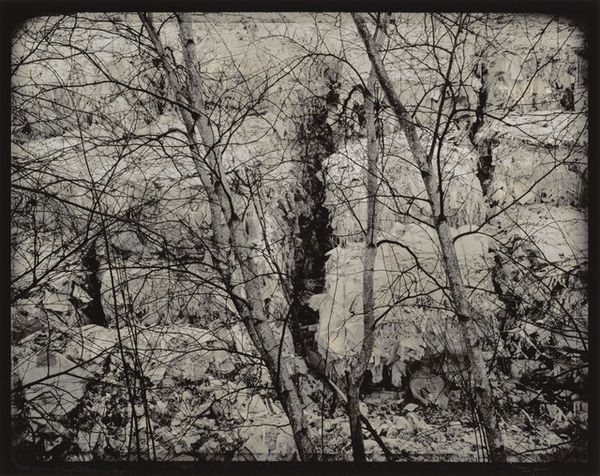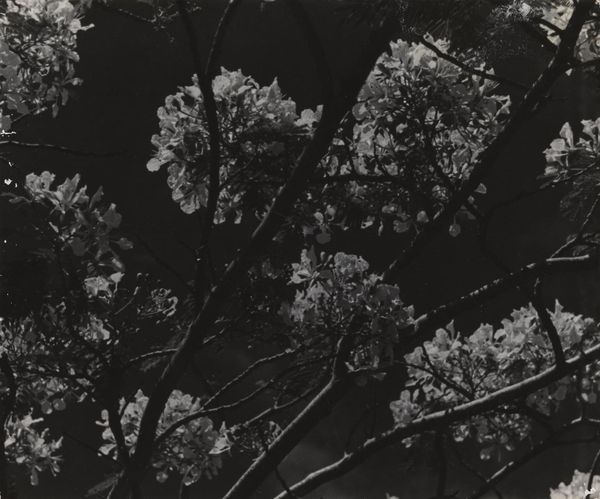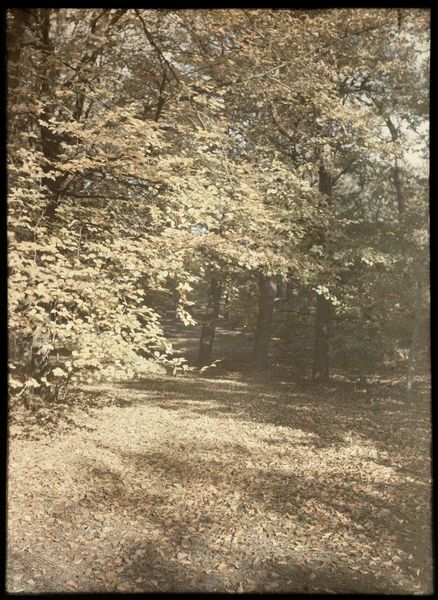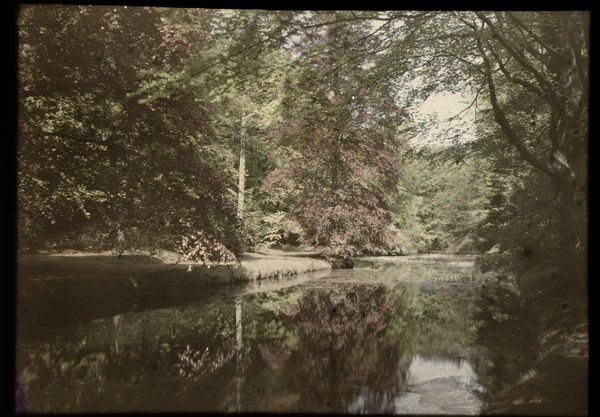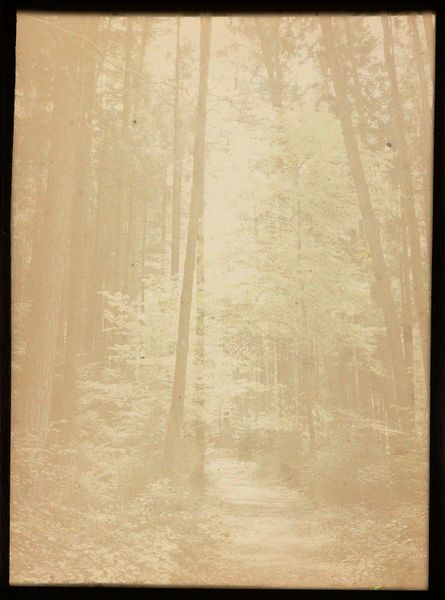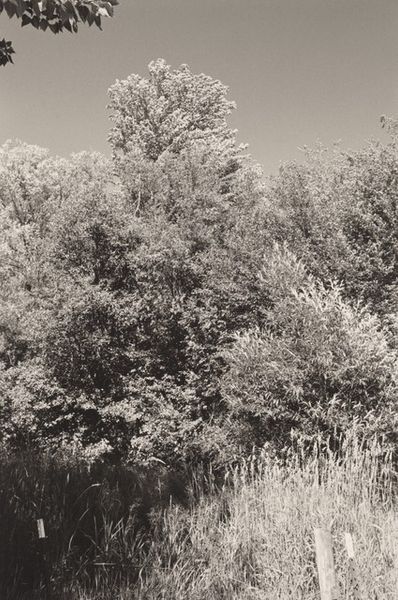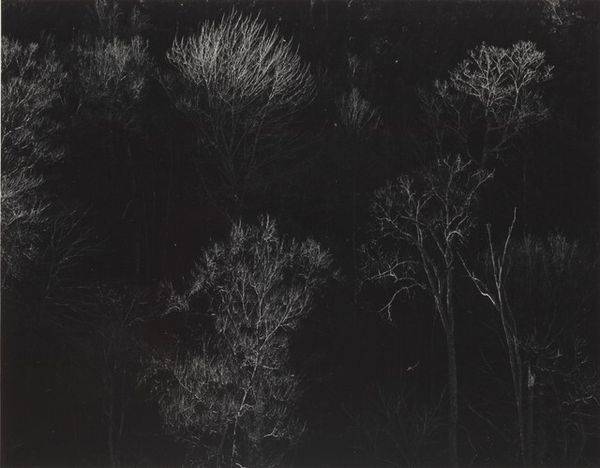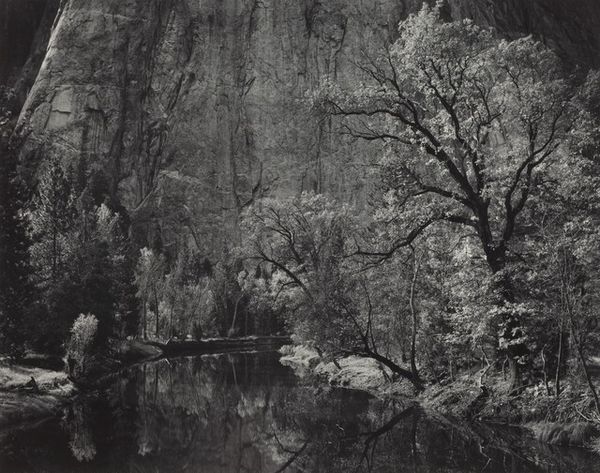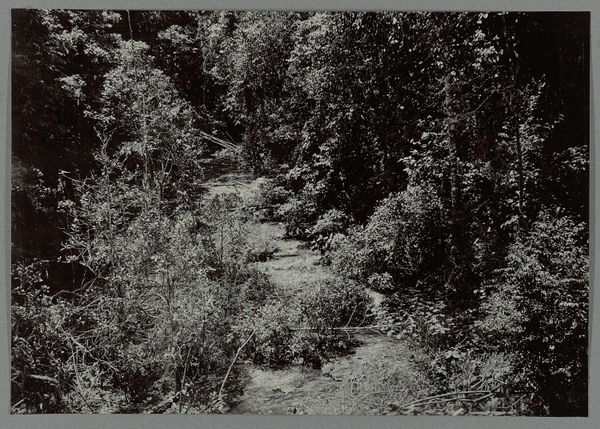
Gezicht in een bos, met links op de voorgrond bewogen takken met gele bladeren 1907 - 1930
0:00
0:00
adolpheburdet
Rijksmuseum
Dimensions: height 88 mm, width 119 mm
Copyright: Rijks Museum: Open Domain
Curator: This is Adolphe Burdet's "Gezicht in een bos, met links op de voorgrond bewogen takken met gele bladeren", or "View in a forest, with agitated branches with yellow leaves in the foreground on the left", created sometime between 1907 and 1930. The Rijksmuseum holds it. It's a photograph. Editor: It feels melancholic to me. A blurry landscape; it's like looking at a memory rather than a clear image. Curator: It definitely possesses an aura of remembrance, that is heightened through the use of photography that echoes Impressionist painting. Think about how he’s capturing fleeting light and atmosphere—not concrete reality. The photograph, though, as a new technology opens new forms of mimesis. Editor: Yes, but unlike the Impressionists’ rapid brushstrokes on canvas, Burdet seems to be manipulating the photochemical process, creating a similar effect. What sort of darkroom processes do you think were involved in a photograph like this to create that diffused glow, the overall dream-like texture? I bet there was plenty of experimentation. Curator: Experimentation is at the core of the changing relationship between image and the real! It reflects an urge to portray inner states, with light and shadow carrying potent symbolic weight, the foreground branches as almost obscuring one's view. Editor: The blur in the foreground and those brighter leaves read almost like a lace curtain— a thin filter but still a filter, a visual artifact, I’d say—keeping you at a slight distance. Curator: Precisely. These visual motifs create a space for subjective interpretation. We become co-creators in the visual narrative. What feelings do those obfuscated passages of nature inspire within us? Do they signify loss, impermanence? Editor: Loss maybe. A subtle observation of how materials themselves obscure reality and transform how we can picture even everyday moments. The camera becomes a strange kind of eye, doesn't it? Curator: Ultimately, Burdet's work, so fragile to us now, seems less concerned with mirroring external reality and more with portraying the intangible landscape of human emotions. Editor: Right. I now read the darkroom experiments, the technical manipulation of his materials as a means toward emotional expressiveness and memory-making, an apt demonstration of photography's place among the Impressionists.
Comments
No comments
Be the first to comment and join the conversation on the ultimate creative platform.

